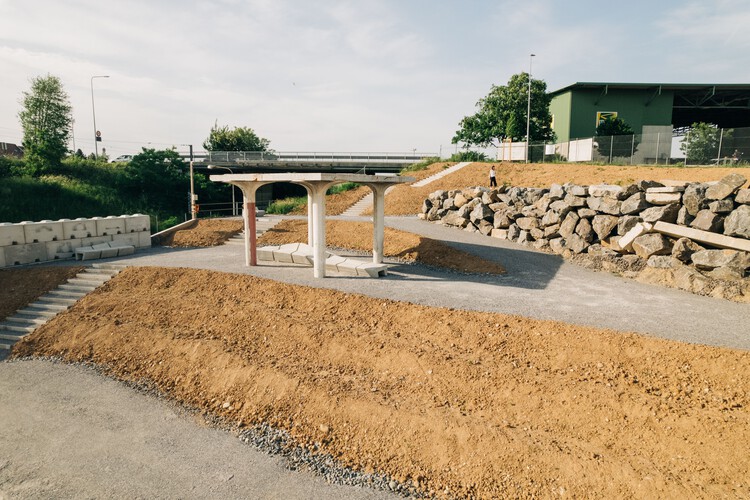
- Year: 2022
-
Photographs:Marc Schneider, Ryan Luke, Girts Apskalns

The Circularity Park Contains a Robotically. constructed retaining wall and a terraced landscape and is accessible to the public on the outskirts of Zurich in Oberglatt, Switzerland. It was conceptualized and built over a one-year period in 2021 and is the demonstrator of pivotal research in autonomous construction, robotics, and architecture conducted within the National Centre of Competence in Research (NCCR) Digital Fabrication at ETH Zurich. It is built on the campus of Eberhard AG, a local leader in sustainable construction and recycling for the building industry, who additionally supported the project with materials and construction innovations. The two ongoing research projects behind the robotic stone wall and the robotic landscape at the ETH Zurich investigate the design, control, and computational tools needed to enable autonomous robotic construction processes directly on the construction site, using as-found building materials and local soil. Additionally, a team at Gramazio Kohler Research, ETH Zurich implemented its digital concrete Eggshell technology for the robotic production of the park’s benches.




















